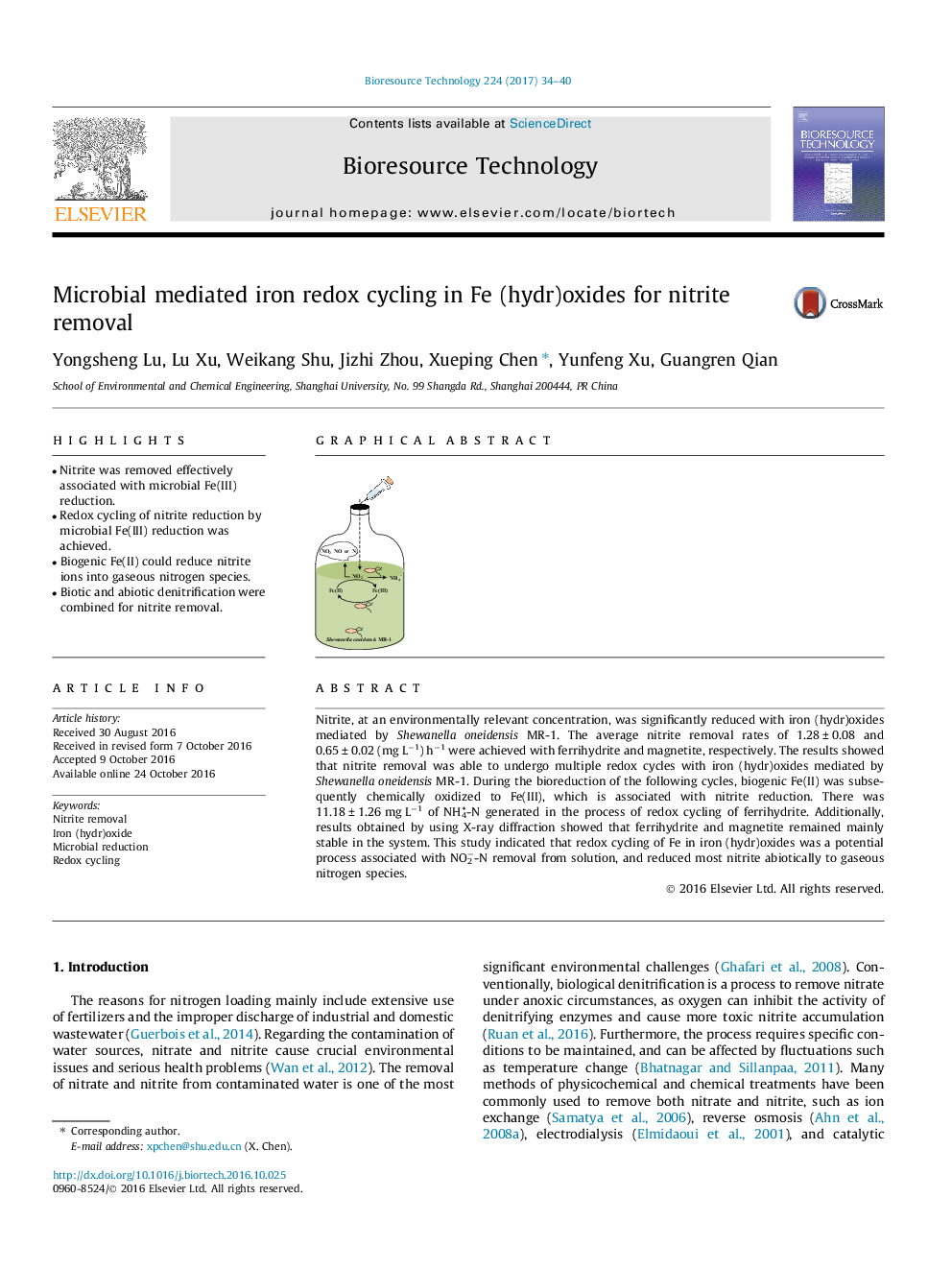| Article ID | Journal | Published Year | Pages | File Type |
|---|---|---|---|---|
| 4997814 | Bioresource Technology | 2017 | 7 Pages |
â¢Nitrite was removed effectively associated with microbial Fe(III) reduction.â¢Redox cycling of nitrite reduction by microbial Fe(III) reduction was achieved.â¢Biogenic Fe(II) could reduce nitrite ions into gaseous nitrogen species.â¢Biotic and abiotic denitrification were combined for nitrite removal.
Nitrite, at an environmentally relevant concentration, was significantly reduced with iron (hydr)oxides mediated by Shewanella oneidensis MR-1. The average nitrite removal rates of 1.28 ± 0.08 and 0.65 ± 0.02 (mg Lâ1) hâ1 were achieved with ferrihydrite and magnetite, respectively. The results showed that nitrite removal was able to undergo multiple redox cycles with iron (hydr)oxides mediated by Shewanella oneidensis MR-1. During the bioreduction of the following cycles, biogenic Fe(II) was subsequently chemically oxidized to Fe(III), which is associated with nitrite reduction. There was 11.18 ± 1.26 mg Lâ1 of NH4+-N generated in the process of redox cycling of ferrihydrite. Additionally, results obtained by using X-ray diffraction showed that ferrihydrite and magnetite remained mainly stable in the system. This study indicated that redox cycling of Fe in iron (hydr)oxides was a potential process associated with NO2â-N removal from solution, and reduced most nitrite abiotically to gaseous nitrogen species.
Graphical abstractDownload high-res image (49KB)Download full-size image
